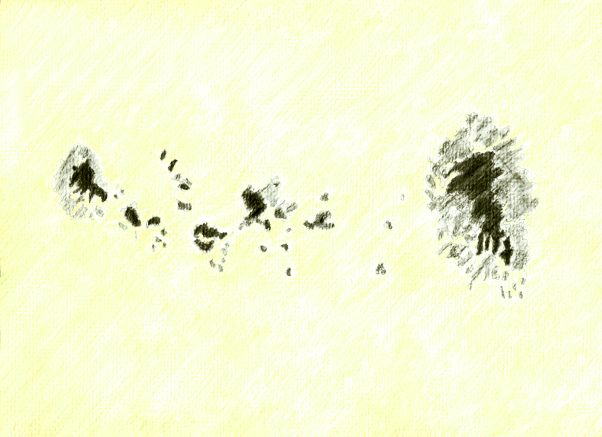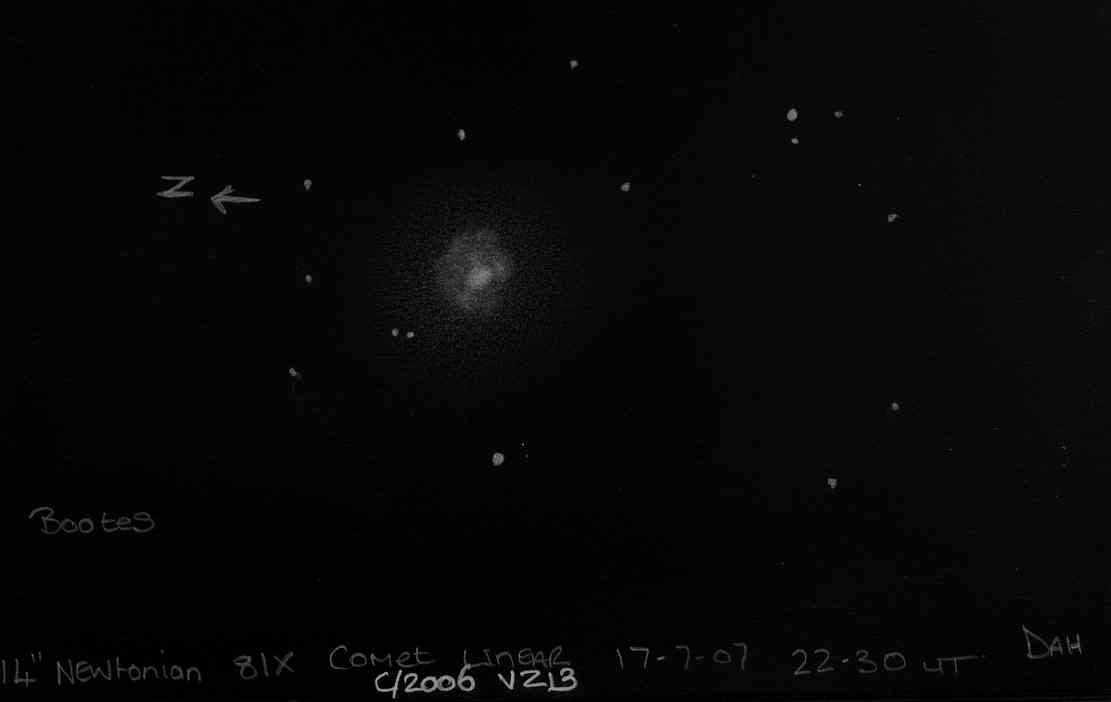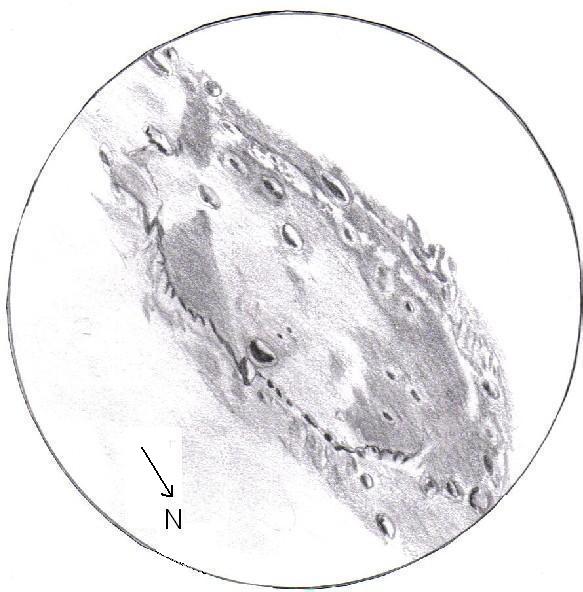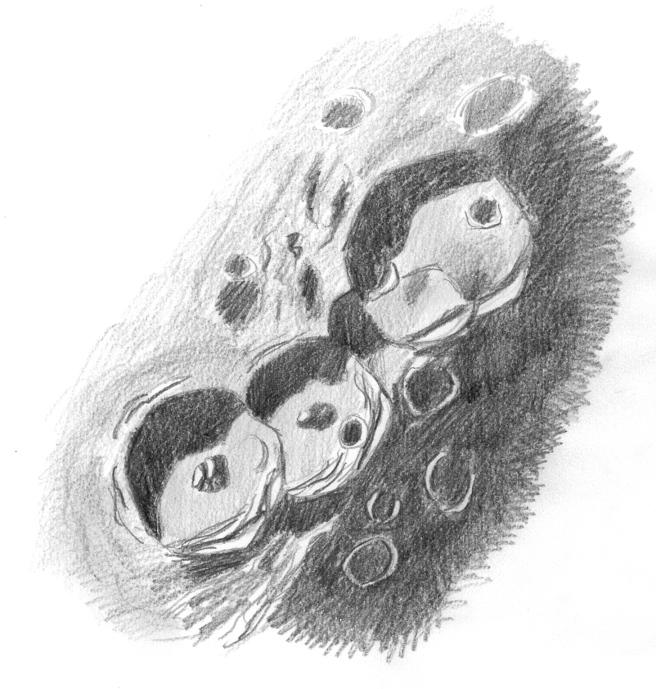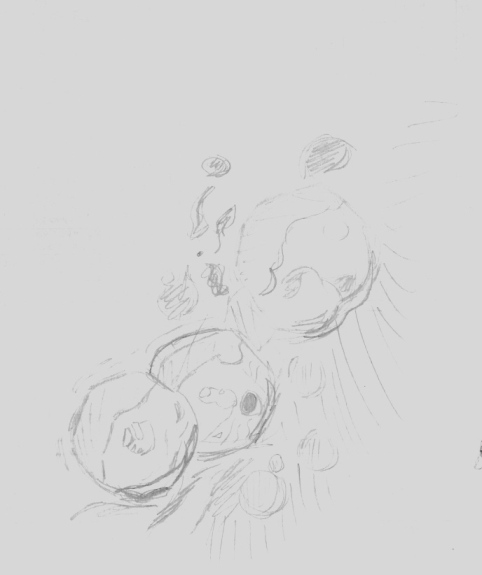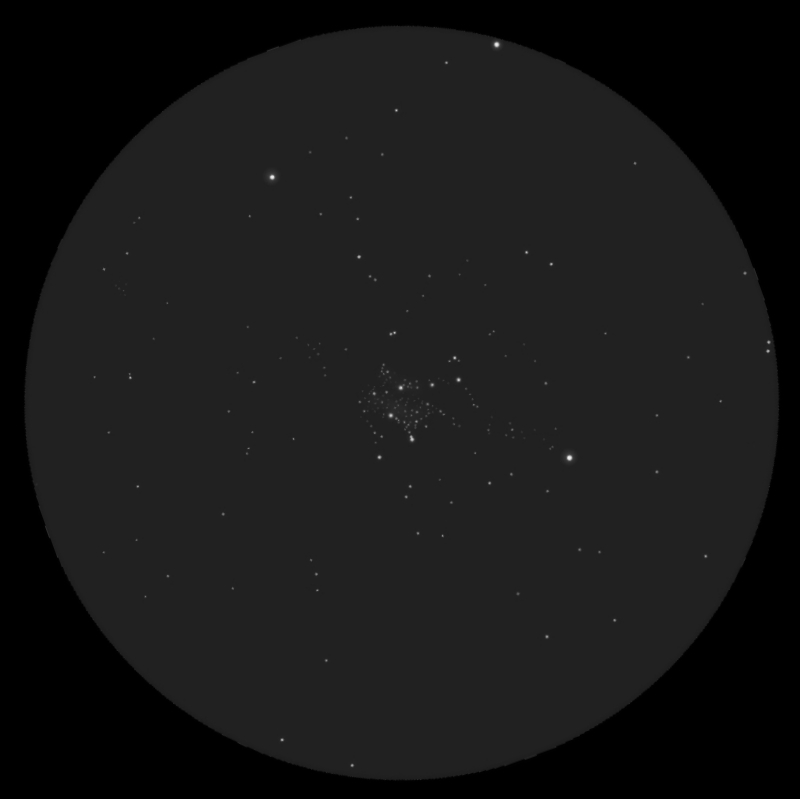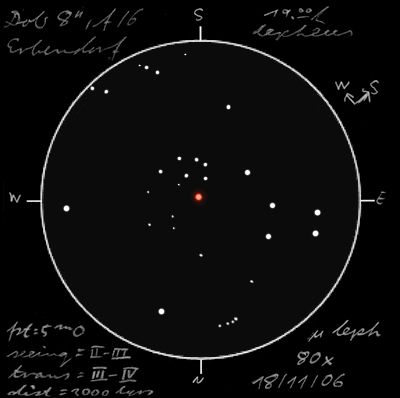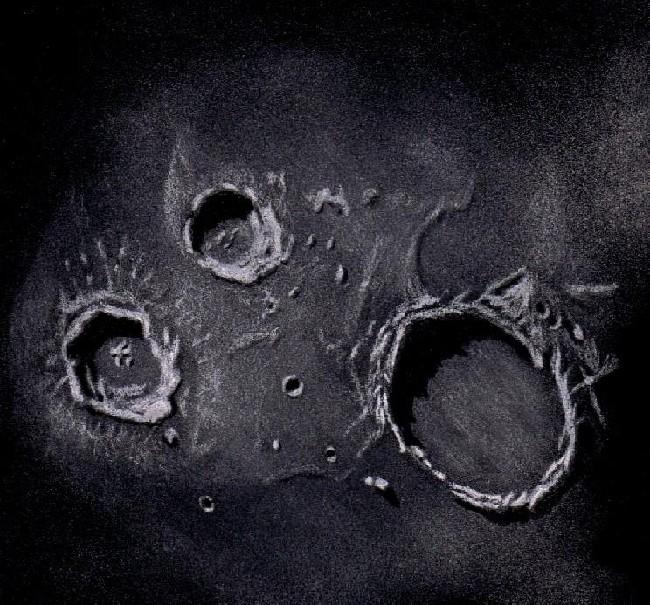That night (the 20th of April 2007) I first planned to redo a sketch of M51. When I
scanned the region, M106 came into view. I found the view so interesting that I
decided to sketch this Messier object instead. At first sight, this galaxy reminded
me of a cumulonimbus cloud drifting in the sky. I could not help it but to see
patterns and shadows in this galaxy. I found the core very confusing to look at.
According to the late Walter Scott Houston, descriptions of its visual appearance
vary considerably. Some observers have reported a needle-like shape, while ‘Scotty’
saw a very bright parallelogram shape. My little scope reveals ‘a drifting cloud’. I
hope you like the view.
Date : April 20, 2007
Time : 21.30UT
Scope : ETX 105/1470
Vixen LV Zoom eyepiece at 15mm
Power : 100
FOV: 30′
Filter : none
Seeing : 2.5/5
Transp. : 2/5
Nelm : 5.3
Sketch Orientation : N down, W left.
Digital sketch made with a digital tablet and PhotoPaint, based on a raw pencil sketch.
Rony De Laet
http://www.geocities.com/rodelaet, my personal website.





